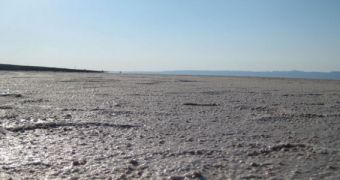Corrosively acidic rivers such as the Spanish Rio Tinto, salt pans such as those in Tunisia and Bolivia, and the cold harshness of Antarctica are all locations analogous to what future space exploration missions could be faced with on other planets. Studying them could yield clues on alien life.
This is especially true when it comes to Red Planet, which lies at the very edge of the Sun's habitable zone, the region where temperatures are just right to support the presence of liquid water on the surface. The locations mentioned above are very similar to certain areas on the surface of Mars.
Since life can endure at all these locations on Earth, is it really such a stretch to assume that Martian lifeforms may endure at similar sites on our neighboring world, provided that life had time to develop, or that meteorites carrying bacteria from Earth made it there long ago?
Many believe the answer to these questions is no. This means that we can expect to see several studies being focused on the environmental characteristics present at these locations, over the next few years, Space reports.

 14 DAY TRIAL //
14 DAY TRIAL //